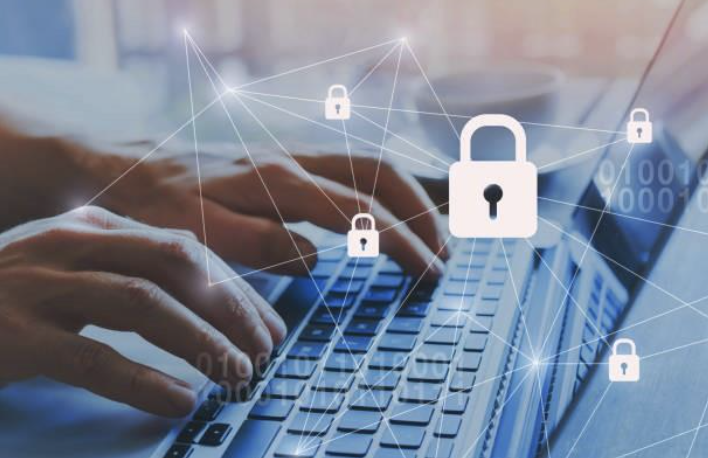
With AI transforming how data is created, shared and secured, businesses face a growing challenge: how to stay competitive while safeguarding sensitive information. Every minute your systems are down, you could be losing $9,000 — or more. As artificial intelligence becomes increasingly embedded in day-to-day operations, the stakes for data privacy and system security have never been higher.
AI is transforming how businesses manage, interpret and act on data — including personal data. But that transformation brings heightened risk. Security strategies that once protected you may no longer be enough.
Data breaches are no longer just accidental losses or brute-force attacks — they’re often the byproduct of deeply automated, AI-enhanced threats. Meanwhile, many companies are using AI tools that process, sort or generate content from personal or proprietary data without fully understanding what’s happening behind the scenes.
This is the new data privacy dilemma: AI is a business accelerator — and a potential liability. Protecting your data now requires more than compliance checklists. It takes visibility, intentional governance and a real understanding of how your AI-enabled systems interact with sensitive data.
The expanding footprint of risk
AI doesn’t just make systems faster — it widens the scope of what’s possible. That includes the ways personal data can be collected, analyzed and repurposed. This means more potential exposure, more gray areas and more pressure to get privacy right.
Here’s what’s changed:
- AI systems ingest and repurpose enormous volumes of data — often scraped from external sources or gathered from user behavior. Without proper guardrails, companies can unintentionally expose private or regulated information through AI-generated content or model training.
- Attackers are using AI to scale and sharpen their attacks. Phishing attempts are more convincing. Malware evolves faster. Threats spread more quickly across your systems. A single vulnerability in your AI pipeline could cascade into massive disruption.
- Consumers are becoming more aware — and more skeptical. People want to know where their data goes, who has access to it and how it’s used. Companies that can’t provide those answers will erode trust and invite scrutiny.
According to recent industry data, organizations lose an average of $9,000 every minute when critical systems go down. For some, the costs rise as high as $5 million per hour. That’s not just an IT issue — it’s a reputational, operational and financial one. When AI is involved, the risk calculus becomes even more complex.
Why AI requires a shift in your data protection strategy
Traditional data privacy strategies often focus on compliance with regulations like GDPR, HIPAA or CCPA. While that’s still critical, AI introduces new risks that compliance frameworks weren’t designed to fully address:
- Opacity of AI decision-making: Many AI systems are black boxes — difficult to audit or explain. That creates a problem when individuals want to understand or contest how their data is used.
- Model drift and data exposure: Over time, AI models can change based on new data inputs, potentially revealing or repurposing sensitive information in ways the business didn’t intend.
- Shadow AI risks: Employees may use AI tools (like ChatGPT or other SaaS AI services) without IT approval. Inputting client data, proprietary information or regulated content into these platforms could violate privacy policies — or worse, become publicly accessible.
The role of governance and prevention
To navigate AI responsibly, companies must move from reactive privacy to proactive governance. That means treating AI not just as a technology function but as a core part of your data strategy.
Here’s where to focus:
1. Know your data — and where it flows
Mapping your data is foundational. Understand:
- What data you collect
- Where it’s stored
- Who has access
- Which AI systems touch it
With more organizations using multi-cloud environments and third-party AI tools, visibility is critical. You can’t protect what you don’t see.
2. Set policies for responsible AI use
Not all AI tools are equal. Define acceptable use guidelines that cover:
- Approved platforms and vendors
- Restrictions on entering sensitive information into AI prompts
- Roles and permissions for who can use AI tools
- Consent protocols for training models on user data
Put clear boundaries in place — and communicate them often.
3. Audit and monitor AI systems regularly
AI models evolve. Your governance should too. Review and test AI outputs for bias, privacy violations and unintended inferences. Monitor for data drift or model behavior changes over time.
If you’re using third-party AI solutions, vet their privacy and security practices thoroughly — including how your data is stored, used and potentially shared.
Understand the real cost of inaction
Many organizations underestimate what downtime really costs. It’s not just about the immediate disruption — it’s the ripple effect across departments, clients and long-term growth. The numbers speak for themselves:
- Businesses lose an average of $9,000 per minute when systems go down
- Some industries face losses of up to $5 million per hour
- It takes 75 days on average for businesses to recover revenue after a major incident
- Stock prices can drop by as much as 9% after a breach or outage
To make smarter decisions about data privacy and AI risk, start by calculating what downtime would cost your organization.
Use this simple formula: Downtime cost = (Lost revenue + Lost productivity + Recovery costs) × Duration
Break it down by department:
- Operations: Lost production, wasted materials, overtime
- Sales & marketing: Missed transactions, customer churn, reputational damage
- Customer service: Brand impact, service-level penalties, trust erosion
- Back office: Idle staff, lost time, unexpected repair and recovery expenses
When AI systems are part of the equation — whether they’re driving automation or being used to detect threats — the stakes rise. A failure in an AI-driven system can be harder to trace, faster to spread and more costly to fix. And without strong governance, even well-intentioned AI use can create unintended exposure.
What responsible AI data use looks like
Across industries, we’re seeing proactive approaches that balance innovation with protection:
- Healthcare organizations are building data enclaves — secure environments that allow researchers to analyze patient data without exposing identifiers.
- Financial services firms are layering in multi-factor controls and real-time behavioral monitoring to prevent unauthorized transactions and fraud.
- Manufacturers are isolating operational tech from broader networks while training staff to recognize AI-powered phishing and access attempts.
- Retailers are minimizing what data they collect, limiting device access and using data loss prevention tools to secure customer and inventory data.
These aren’t high-theory ideas — they’re practical tactics grounded in real business needs. And they’re working.
The real value: Trust, resilience and long-term performance
Ultimately, protecting data in the age of AI isn’t just about risk — it’s about resilience and trust. Companies that get privacy right are more likely to:
- Recover faster from system failures
- Build stronger relationships with customers
- Navigate regulatory changes more smoothly
- Protect intellectual property and brand reputation
When AI is used responsibly, it can help you operate smarter and respond faster. But only if it’s grounded in a secure, ethical framework.
Final word: Start with visibility
You don’t need to overhaul everything at once — but you do need to start. Begin by identifying your most critical data systems, mapping where AI interacts with them and establishing clear policies for use and access.
The businesses that succeed in the AI era won’t be the ones that move the fastest — they’ll be the ones that move the smartest.



